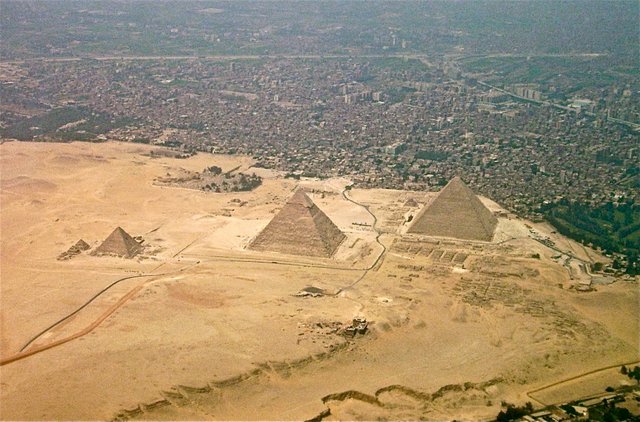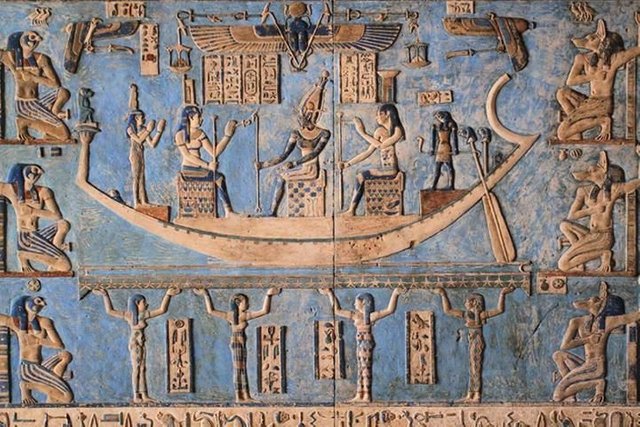Fingerprints of the Gods
Fingerprints of the Gods is based on 5 years of research by the author into the field of pre-history, that is historical events before the birth of ancient Egypt and civilization in Mesopotamia. The claim made by Graham Hancock is that major monuments in existence were built in 11,000 BC or maybe even 36,000 BC by an ancient global seafaring civilization who used mathematical geometry and symbology to ‘encode’ future dates at which point major cataclysms were to take place. He then overlaps these dates with modern geological techniques to show that they do coincide with actual floods and disturbances in the Earth’s magnetic core.
Hancock starts by reproducing four maps drawn in the Middle Ages by navigators showing parts of the world not officially explored yet such as the Antarctic and the ‘New World’. The most prominent of these is the so called Piri Reis map commissioned by Ottoman admiral Piri Reis in 1513AD. Hancock states ‘The Admiral could not have acquired his information on this latter region from contemporary explorers because Antarctica remained undiscovered until AD 1818…’ On the unexpected presence of accurate longitude, Hancock notes ‘until a breakthrough invention in the eighteenth century, cartographers and navigators were unable to fix longitude with any kind of precision’.
We are next in Peru, at the beginning of Hancock’s travels, reading from his diary which reoccurs welcomingly and provides an entertaining thread throughout the technically dense book. He sets the scene with great artistry demonstrating his decades of accumulated skill from his time as a newspaper journalist. ‘…I awoke to find that we were passing through a painting. The foreground, brightly sunlit, consisted of flat green meadows sprinkled with little patches of thawing frost, distributed on either side of a stream across a long, wide valley’.
After examining the ruins of the pre-Inca peoples in Peru and Bolivia he travel up to Mexico to examine the Mayan megaliths and provides a synopsis of indigenous folk law. The main points gathered up to now are:
Inca and Mayan myths both speak of wise men arriving and handing down laws and customs
Stone works display a highly advanced technical knowledge
Ruins aligned to the ever changing variations in the sun’s equinoctial rising must have been built at least 13,000 years ago
A belief in previous epochs where they were either ‘…destroyed by a rain of fire from the sky and the forming of lava’ or ‘Destruction came in the form of torrential rains and floods’.
Stone carvings showing symbols found across the world, including ancient Egypt
Hancock now moves us to Egypt where the rest of the book focuses on.

Here on the banks of the Nile we follow the author from the pyramids of Giza down to the temple of Abydos. The technical scope of the work is expanded and refined with the introduction of Geologist professor Robert Schoch, Egyptologist Robert Bauval and the late John Anthony West.
The main argument here is that various complexes show construction techniques that are out of place in the time period established experts claim them to have been built, environmental weathering shows them to have been standing for at least 13,000 years - when Egypt was frequented by regular torrential rains - and the 3 pyramids at the Giza complex incorporate geometrical ratios matching that of the planetary globe. Further the 3 Giza pyramids line up to mimic the 3 belt stars of the constellation Orion and textual references are made to preceding ages each destroyed in a cataclysm – just as in the new world civilizations.
The book is 576 pages and no summary can do justice to the care and attention paid by Hancock in building a solid treatise arguing against the established view of not only Egyptologists but academia in general, for if he is right, then all professors in history, archeology and anthropology must admit they are operating on blind faith and begin again their studies. Knowing his book goes against the current, Hancock makes no compromises with the established view and deploys a cunning wit to entertain the reader and drive forward his crusade on the academic world.
Ending his book, the maverick former Sunday Times writer descends into geology with at articulate description of the phenomenon known as Earth crust displacement in which the surface of the Earth periodically slides over the magma layer below like an orange peel slipping over the orange. This phenomenon, he argues coincide with large scale flooding and gigantic earth tremors with the associated volcanic eruptions sending lava spewing across the world.
When publish in 1995 Graham Hancock became one of the most recognized archeological figures, gaining his fame and infamy in equal measure. His detractor in the academic world closed ranks and after 2 successful documentaries he was ambushed by the BBC who took great pains to discredit his works, even resorting to patronizing attacks both on Hancock and the moderately informed general viewer.
Suffice to say like all books it has its shortcomings. The, at times, over eager Hancock makes the unfortunate error of pushing his belief in the Mayan prophesy of Armageddon in 2012 whilst also putting significant stock in a cataclysm scheduled for some time in mid 2000. Due to the cyclical nature of the astrological ‘clock’ no certainty can be had in the various legends and monuments being 13,000 years old - they may be 36,000 years old or 49,000 years old. Lastly, the book would have been more satisfying if a greater number of ancient structures where examined – even briefly, on other continents, after all Hancock is arguing that there was an ancient world civilization.
Fingerprints of the Gods is an Excellent work of non-fiction and a great asset to anyone interested in history, but isn’t in the business - so to speak.
